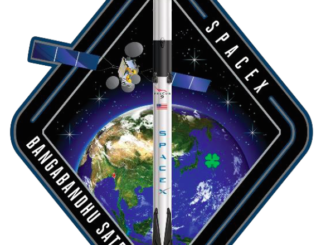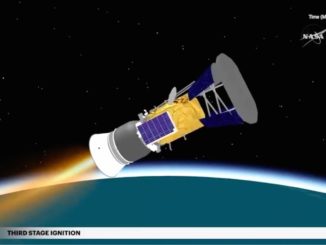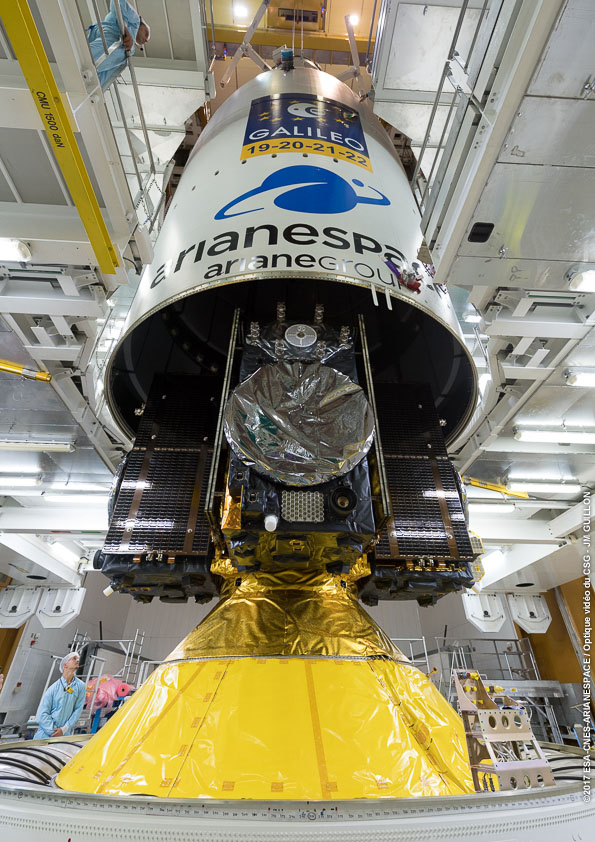
Technicians working in the jungle of French Guiana have installed four new European Galileo navigation satellites on top of their Ariane 5 launcher, and filled the rocket’s upper stage with storable liquid propellants for liftoff Tuesday.
The satellite quartet will join 18 others already in space to build out Europe’s Galileo fleet, an independent civilian-run analog to the U.S. Air Force’s Global Positioning System and the Russian military’s Glonass network.
Liftoff of the Ariane 5 rocket is set for an instantaneous launch opportunity at 1836:07 GMT (1:36:07 p.m. EST; 3:36:07 p.m. French Guiana time) Tuesday.
Built by OHB in Bremen, Germany, with navigation instruments provided by Britain’s Surrey Satellite Technology Ltd., the four satellites arrived at the Guiana Space Center on the northeastern coast of South American in pairs on two trans-Atlantic cargo flights in September and October.
The satellites were tested and fueled with in-orbit maneuvering fuel in a clean room at the European-run spaceport in mid-November, then stacked on a specially-designed dispenser provided by Ariane Group, the industrial consortium owned by Airbus and Safran that oversees the Ariane rocket’s supply chain and the French launch services provider Arianespace.
The fully-integrated payload stack moved to the Ariane 5’s final assembly building Nov. 28, and cranes hoisted the satellites and their carrier module atop the launcher Nov. 29. The Ariane 5’s composite 17.7-foot (5.4-meter) diameter nose shroud was lowered over the satellites Nov. 30 to complete the rocket’s assembly.
Each Galileo spacecraft weighs around 1,576 pounds (715 kilograms) at launch.
In parallel with the satellite preparations, ground crews put together the Ariane 5 rocket inside the Guiana Space Center’s launcher integration building beginning Oct. 23 with the lifting of the vehicle’s cryogenic core stage over its mobile launch platform. Twin solid rocket boosters were rolled into the integration hangar Oct. 24, then moved into position on each side of the first stage for final attachment Oct. 26.
The Ariane 5’s upper stage was raised on top of the rocket Nov. 2, along with its vehicle equipment bay, a ring of control avionics and computers that will guide the rocket in flight. Workers transferred the rocket to the nearby final assembly building Nov. 22 to receive its payloads.
Since last week’s addition of the Galileo satellites to the launcher, technicians have fueled the Ariane 5’s upper stage with hydrazine and nitrogen tetroxide propellants.
Next week’s mission will fly on the rarely-used Ariane 5 ES version of Europe’s workhorse rocket, which uses an upper stage fed by storable hypergolic propellants, not the cryogenic liquid hydrogen and liquid oxygen mixture used on most Ariane 5 launches.
The hydrazine-fueled upper stage’s Aestus engine is capable of reigniting multiple times in space, while the Ariane 5’s hydrogen-fueled engine can only fire once per launch. Two upper stage burns are needed to place the Galileo satellites into a circular orbit at an altitude of approximately 14,200 miles (22,900 kilometers).
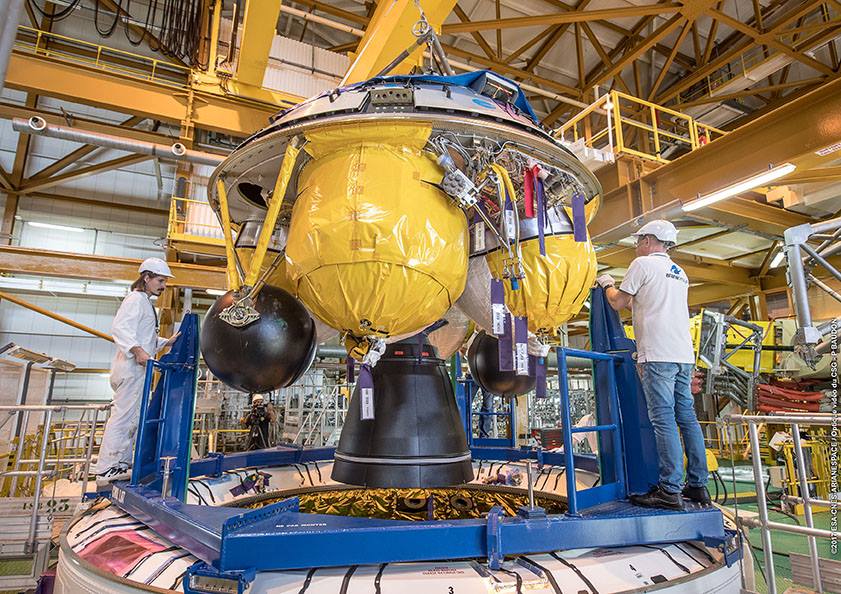
Managers from Arianespace and the European Space Agency, which manages procurement and launches for the European Commission’s Galileo program, approved final preparations for the flight during a customary launch readiness review Friday.
The Ariane 5 will be towed along dual rail tracks from its final assembly building to the ELA-3 launch zone Monday, and ground crews will prepare the launcher for Tuesday’s countdown.
The final countdown is set to begin at 0628 GMT (1:28 a.m. EST), followed by a check of the Ariane 5’s electrical systems at 0713 GMT (2:13 a.m. EST).
Workers will put finishing touches on the launch pad, including the closure of doors, removal of safety barriers and configuring fluid lines for fueling. The flight program for the launch will also be loaded into the rocket’s computer.
The launch team will begin the process to fuel the rocket with super-cold liquid hydrogen and liquid oxygen propellants around 1343 GMT (8:43 a.m. EST). First, ground reservoirs will be pressurized, then the fuel lines will be chilled down to condition the plumbing for the flow of super-cold liquid hydrogen and liquid oxygen, which are stored at approximately minus 423 degrees Fahrenheit and minus 298 degrees Fahrenheit, respectively.
It will take approximately two hours to fill the Ariane 5 core stage tanks.
The storable liquid propellants on the Ariane 5’s second stage and the pre-packed powder fuel inside the Ariane 5’s twin boosters are already loaded.
Chilldown conditioning of the Vulcain 2 first stage engine will occur at 1433 GMT (9:33 a.m. EST), and a communications check between the rocket and ground telemetry, tracking and command systems is scheduled for 1726 GMT (12:26 p.m. EST).
The computer-controlled synchronized countdown sequence will begin seven minutes before launch to pressurize propellant tanks, switch to on-board power and take the rocket’s guidance system to flight mode.
The Vulcain 2 engine will ignite as the countdown clock reaches zero, followed by a health check and ignition of the Ariane 5’s solid rocket boosters seven seconds later to send the 1.5 million-pound launcher skyward.
Five seconds after blastoff, the rocket will begin pitching northeast from the ELA-3 launch pad, surpassing the speed of sound less than a minute into the mission. The Ariane 5’s twin solid rocket boosters will jettison 2 minutes, 20 seconds after liftoff.
Once above the dense atmosphere, the launcher’s payload fairing will fall away at an altitude of more than 70 miles — about 112 kilometers. The Ariane 5’s first stage will shut down 8 minutes, 55 seconds after liftoff, followed moments later by stage separation and ignition of the hydrazine-fueled Aestus engine.
The rocket’s upper stage will fire for nearly 11 minutes during the first of two burns on Tuesday’s flight, putting the Galileo satellites into an initial egg-shaped transfer orbit.
The Aestus engine is scheduled to cutoff 19 minutes, 58 seconds, after liftoff, beginning a coast of more than three hours.
The upper stage will restart at 3 hours, 27 minutes, 50 seconds, for a second burn lasting more than six minutes. The rocket is aiming for a near-circular orbit more than 14,200 miles above Earth at an inclination of 57 degrees, according to an Arianespace press kit.
The first pair of Galileo satellites will deploy at T+plus 3 hours, 35 minutes, followed by the second pair at T+plus 3 hours, 55 minutes.
The new Galileo satellites will enter service next year, moving the multibillion-dollar European navigation constellation closer to global service, a capability that will require at least 24 healthy spacecraft in orbit.
Four more Galileo satellites are scheduled for launch in July 2018 on another Ariane 5 rocket, while subsequent European navigation craft are contracted to launch on next-generation Ariane 6 rockets starting at the end of 2020.
Tuesday’s launch will be the 11th and final flight by Arianespace this year, and the sixth Ariane 5 mission of 2017.
More photos of the recent launch preparations are posted below, showing the stacking of the Ariane 5 rocket and processing of the Galileo satellites ahead of next week’s flight.
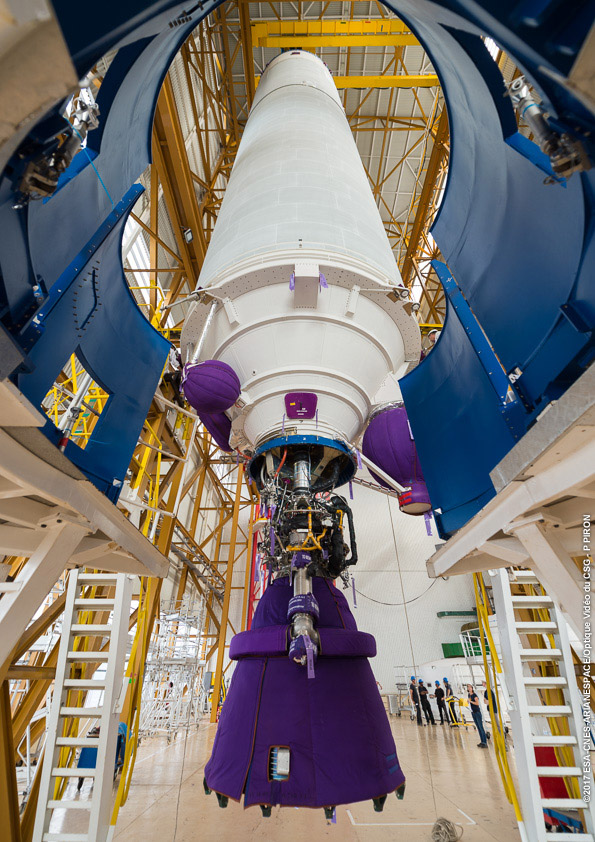
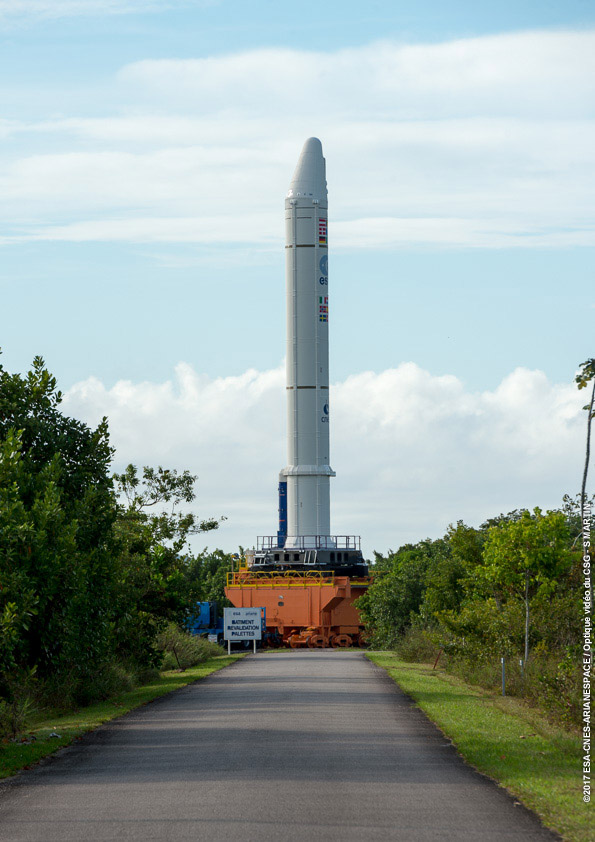
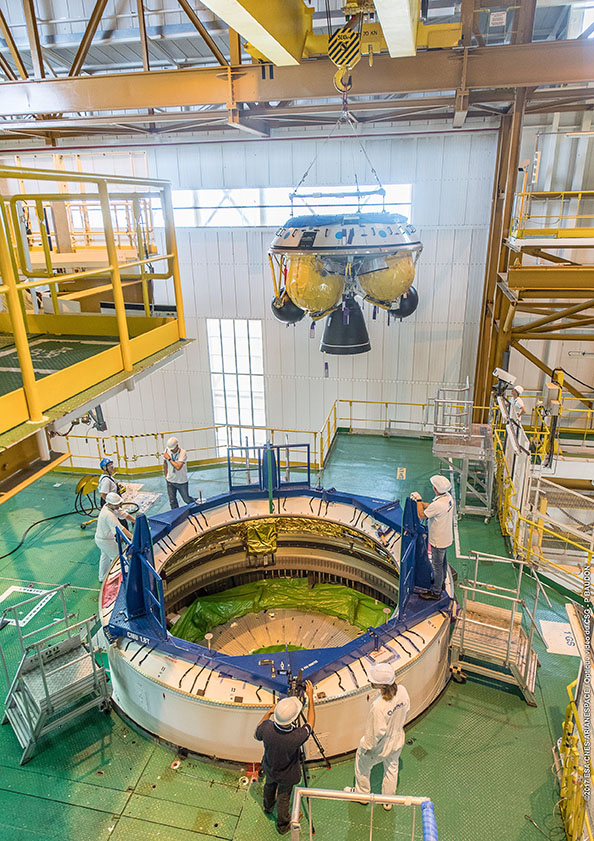
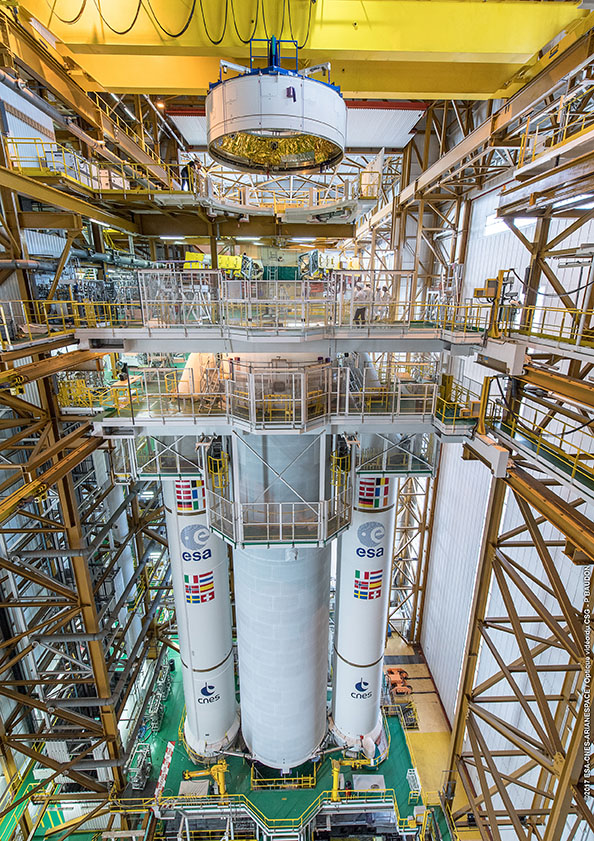
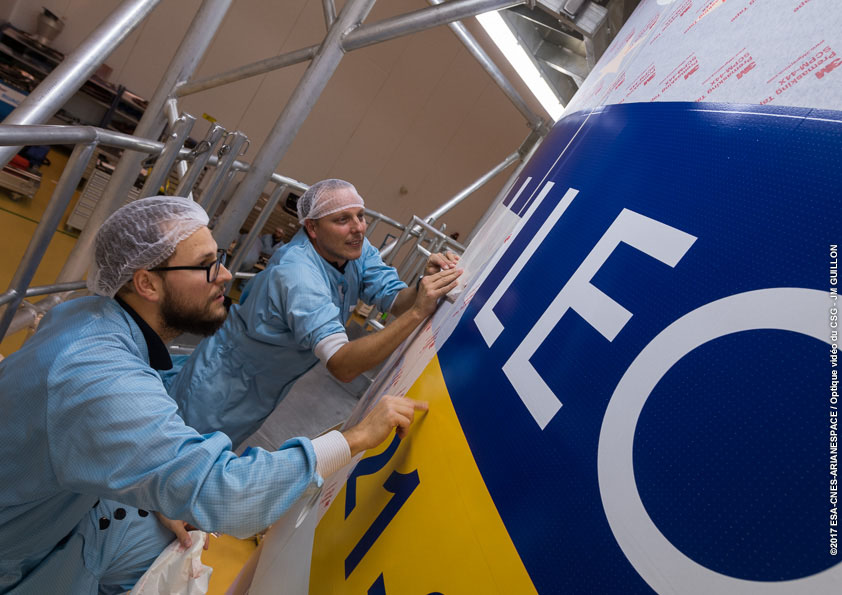
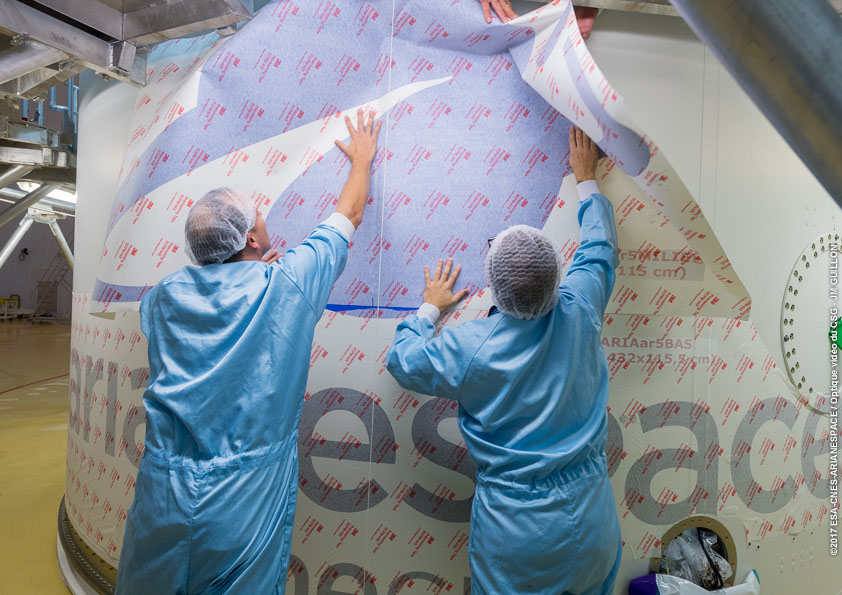
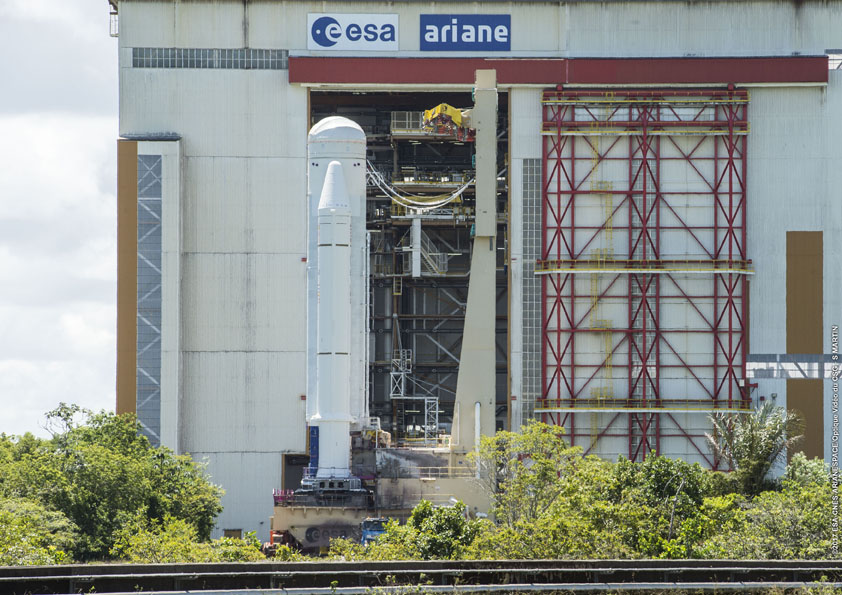
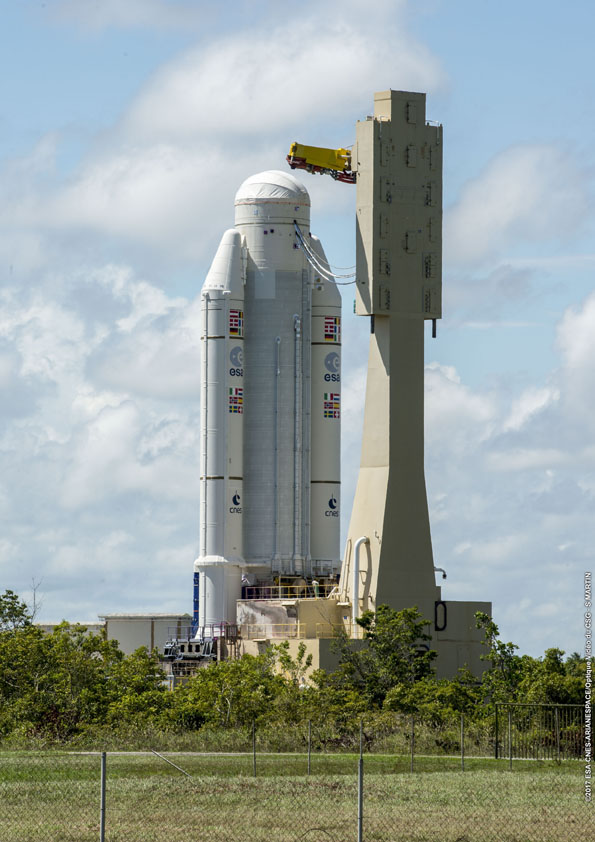
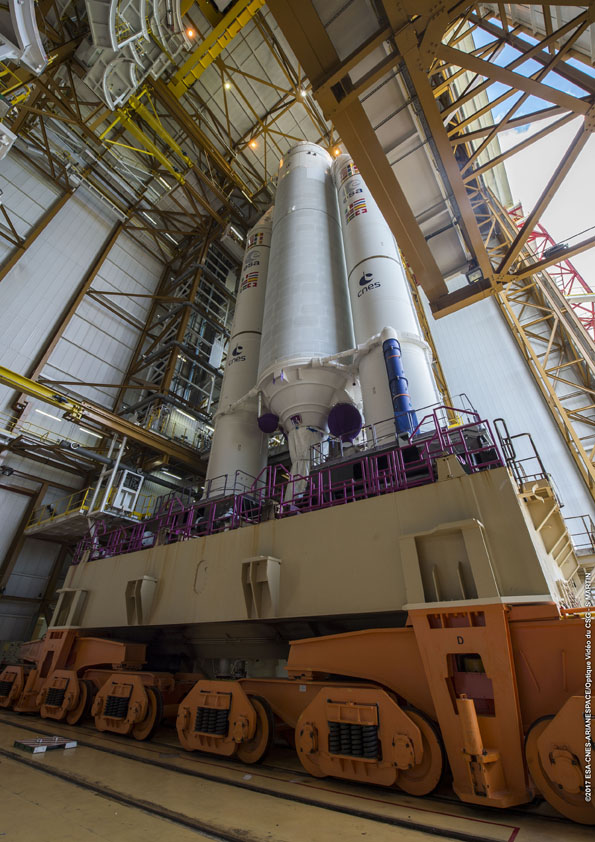
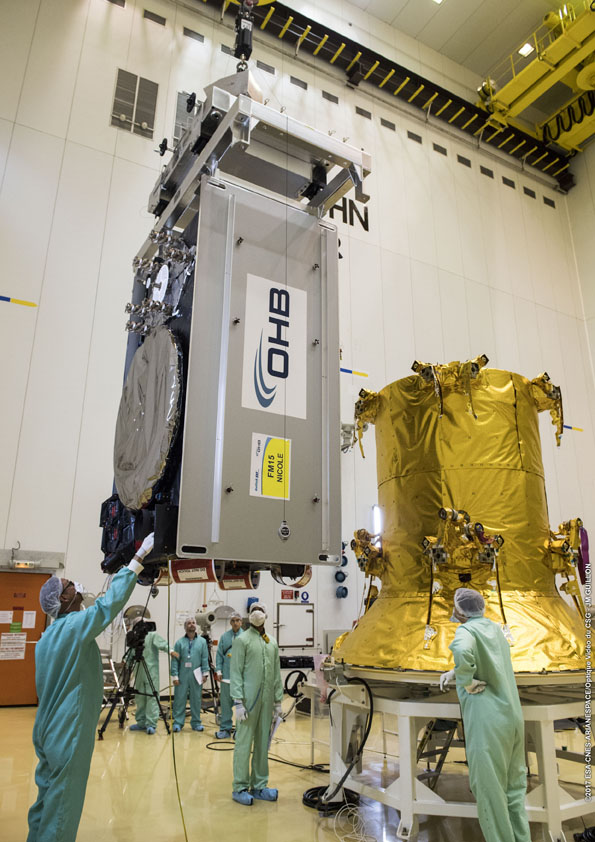
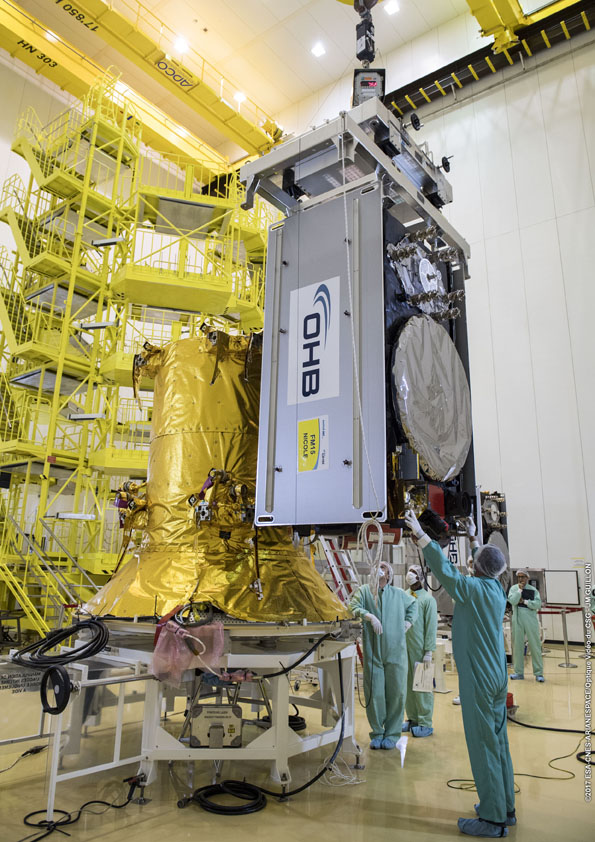
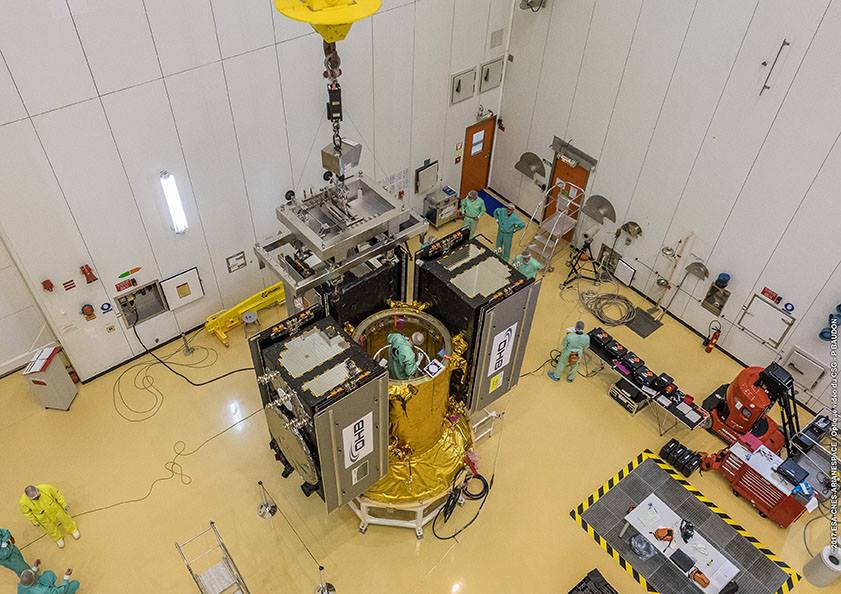
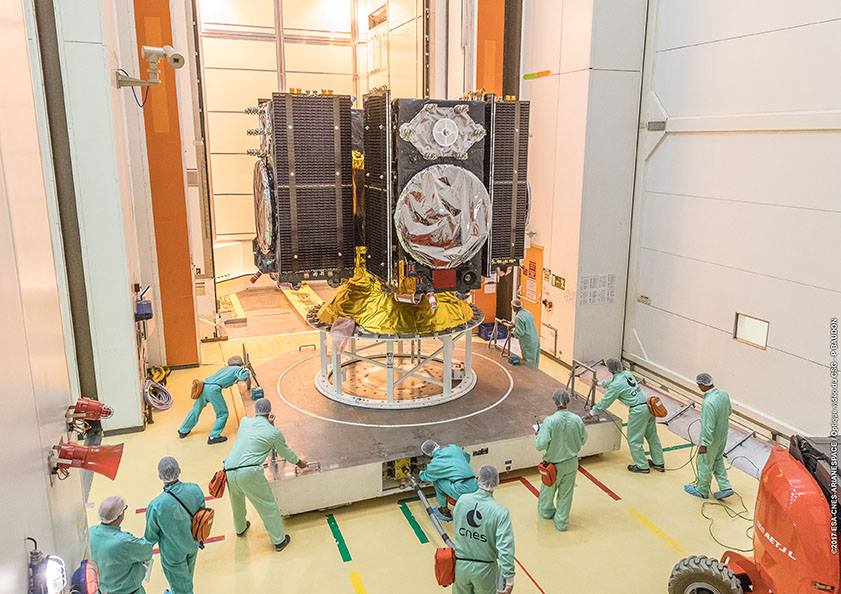
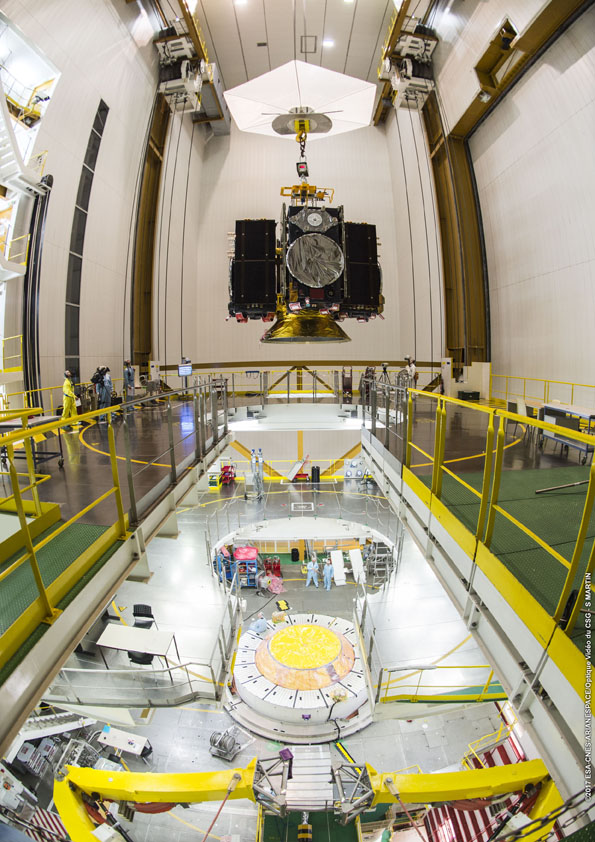
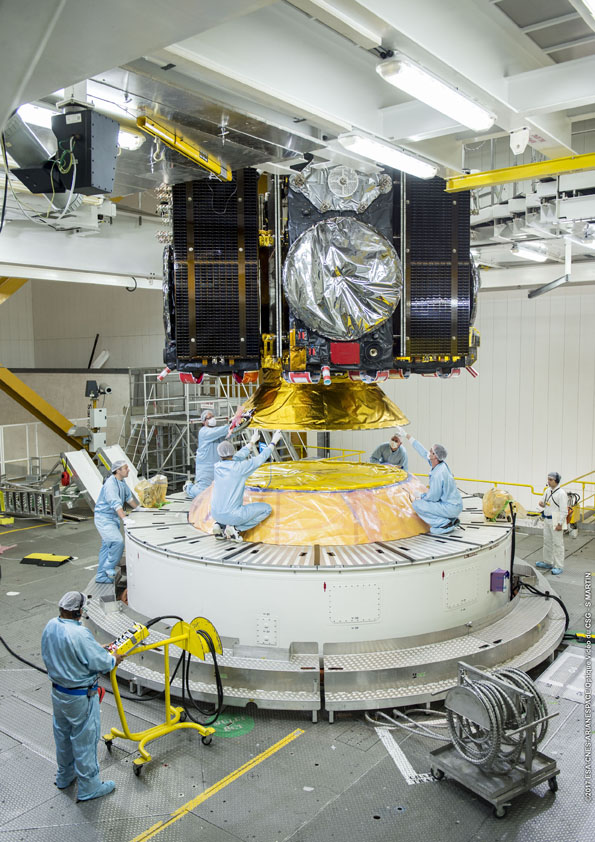
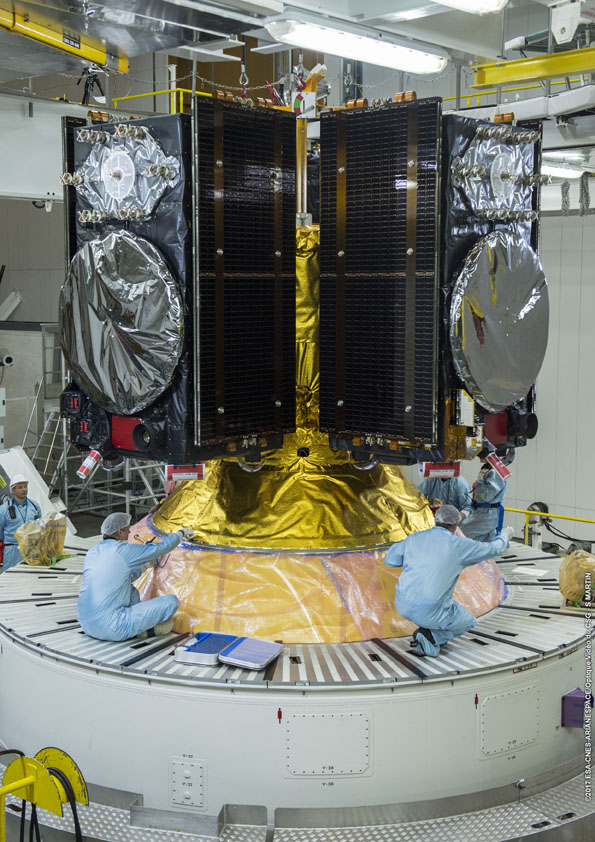
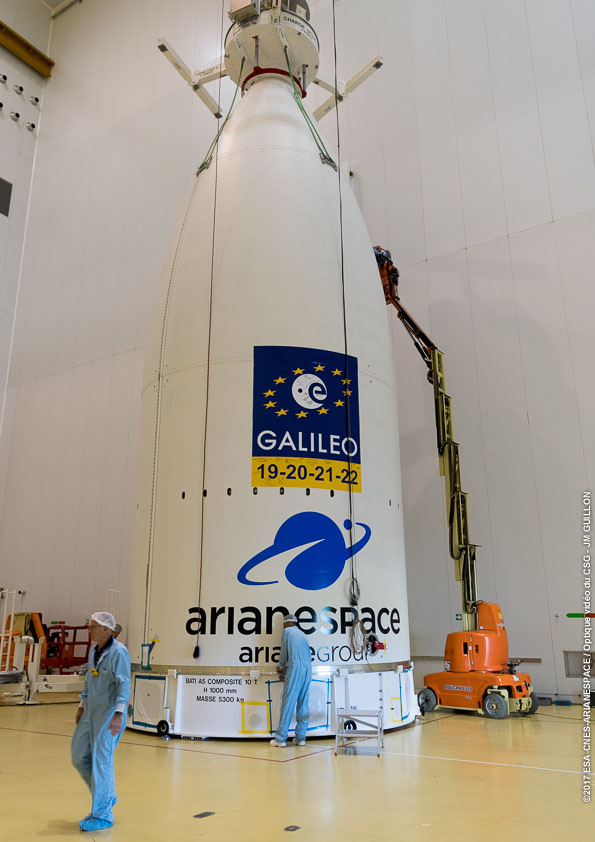
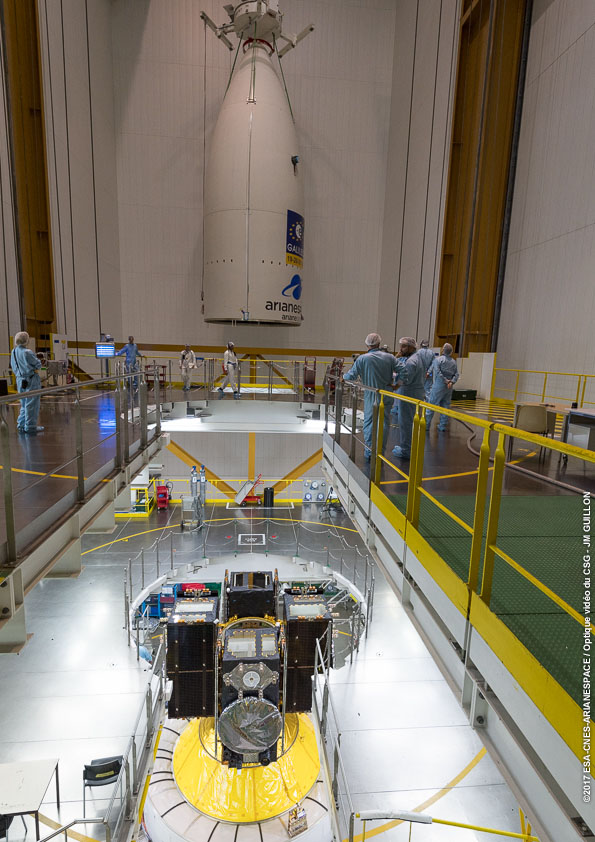
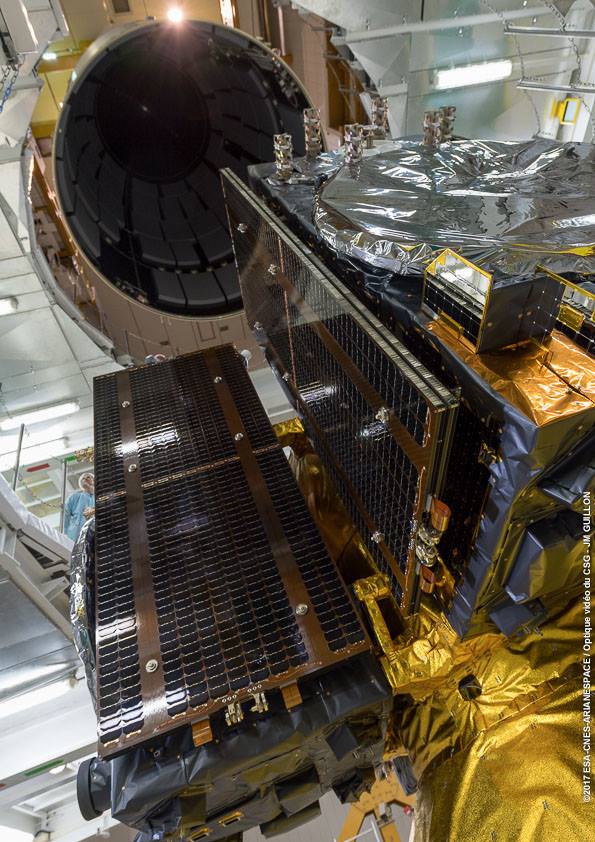
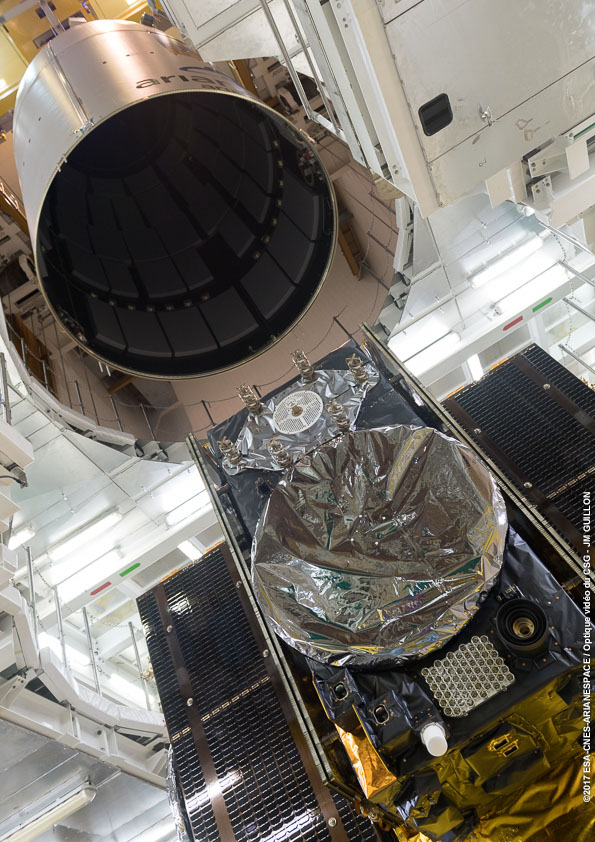
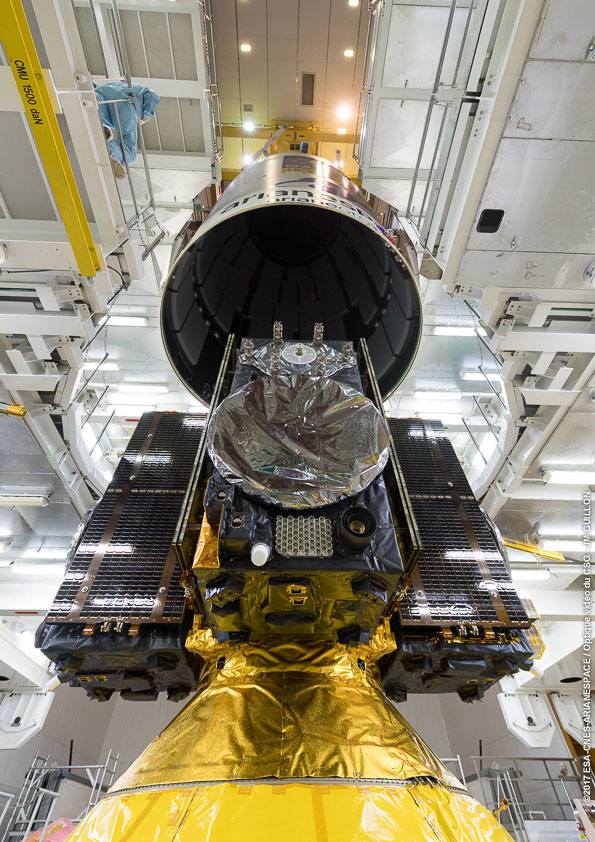
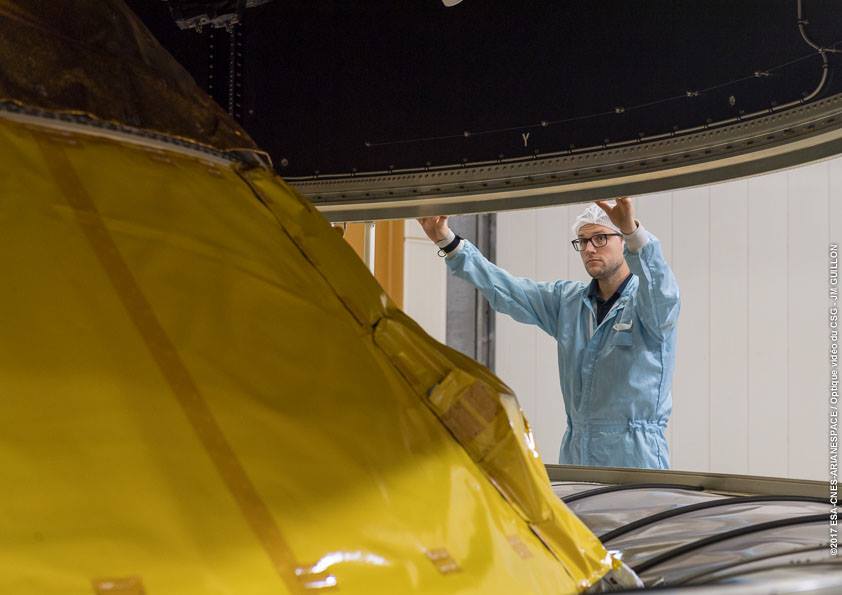
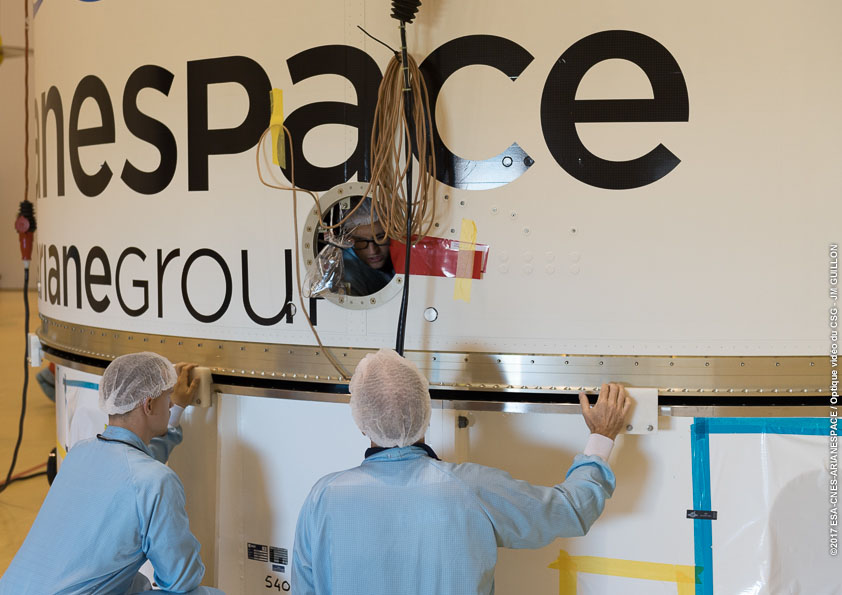
Email the author.
Follow Stephen Clark on Twitter: @StephenClark1.

